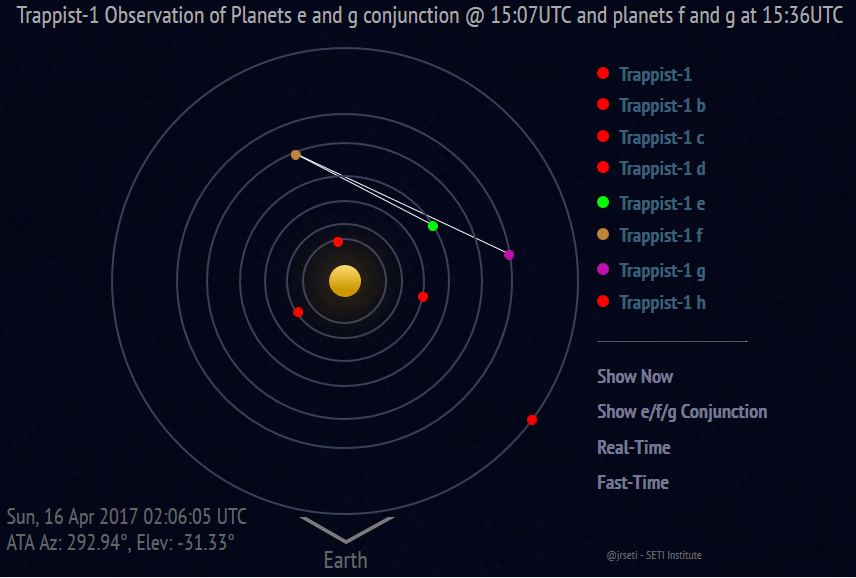SETI Institute observes TRAPPIST-1
- Ken Ecott
- Apr 7, 2017
- 3 min read
tellar systems with as many as 8 planets, like ours, are rare in the galaxy. This is why the discovery of 7 rocky exoplanets around the dwarf star, Trappist-1, has gotten planetary scientists so excited. Even further, three of the planets in the Trappist-1 system are believed to be in the “habitable zone” for life: close enough to their star to melt ice but not so close that all the water evaporates. In other words, these planets might have liquid water at their surfaces.

The story of Trappist-1 has been going on for about a year. Not long after the first three planets were discovered, Trappist-1 was scrutinized by SETI Institute scientists in June, 2016. We searched for telltale signs of a civilization that was intentionally beaming a radio transmission directly toward Earth. Such work is the bread and butter of the Search for Extraterrestrial Intelligence, and the SETI Institute spends 12 hours every day searching for lighthouse beacons around all the stars within a few hundred light years of Earth.
Last year, our observations didn’t turn up anything special. But new research shows that Trappist-1 hosts as many as seven Earth-like planets. This raises an interesting hypothesis that more than one of these planets might be colonized by an advanced civilization. In that case, they may be beaming powerful communication signals between the planets, and when two of the planets line up with Earth, some of that beam may spill over the planet edge and make it to our telescope. We call this kind of observation “eavesdropping.” And today, at 8:53 am PDT, two of the habitable zone planets come into alignment with Earth.
Taking advantage of this opportunity, today we are hunting for evidence for these communication signals at the Allen Telescope Array (ATA) by collecting data at the two frequencies 2.84 and 8.2 gigahertz. These frequencies are in the range that is used on Earth for spacecraft communication (for example, communications with the Voyager spacecraft).
If two ET beings on different planets want to talk to each other, we expect that their communication signals would carry a high data rate, hence occupy a wide range or band of frequencies. Such signals are different from the narrow band beacons we usually search for and must be collected in a special way. Instead of using our workhorse SETI instrument (SonATA, or SETI on ATA), today we are using the ATA in camera mode, which generates snapshot images of the telescope field of view once every 10 seconds. These imaging observations are sensitive to powerful broadband signals such as might be used for spacecraft propulsion.
Meanwhile, we’re also collecting and storing the raw telescope data coming from the direction of Trappist-1. Except for special cases like today, we usually cannot afford to store the raw data that comes in at several gigabytes per second. Today we will capture several TB of raw telescope data that will be uploaded and searched using high speed cloud computers, through a collaboration with IBM. In this collaboration, we are experimenting with new methods to discover symbolic patterns in radio signals – patterns that might indicate some sort of language structure. Again, these analyses are computationally too expensive to do at the ATA on an everyday basis.
The kinds of signals that we're looking for would be invisible except for a few minutes when the two exoplanets come into alignment with Earth. Normally, these observations would be confounded by all kinds of man-made signals that come and go at random. The opportunity here is that we can predict when communication signals should appear, and if they do, then it is either the real thing or an unlikely coincidence. If we do find something unusual, we can’t be certain that a signal is ET from just one short look. However, we will follow-up on any interesting signals with many more observations in the future.
We invite you to join us on this adventure to look for ET signals in a new way using SETI Institute’s own telescope, the Allen Telescope Array. Watch our Twitter and social media feeds for real-time updates on these observations.








Comments